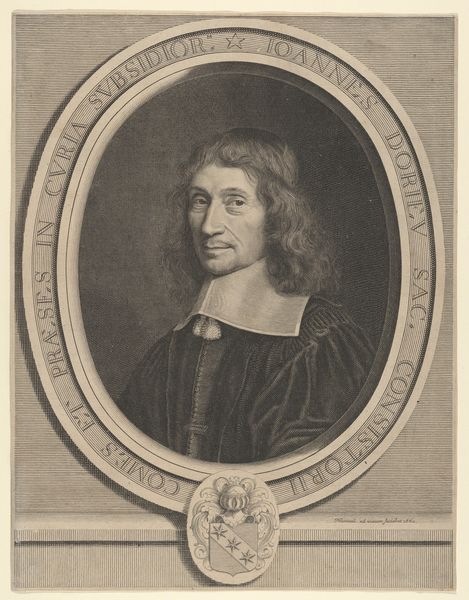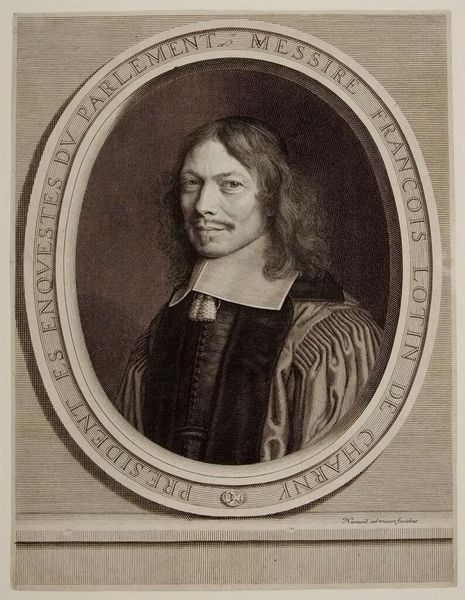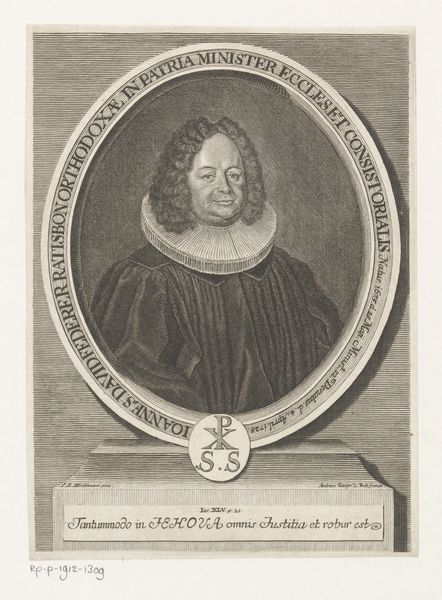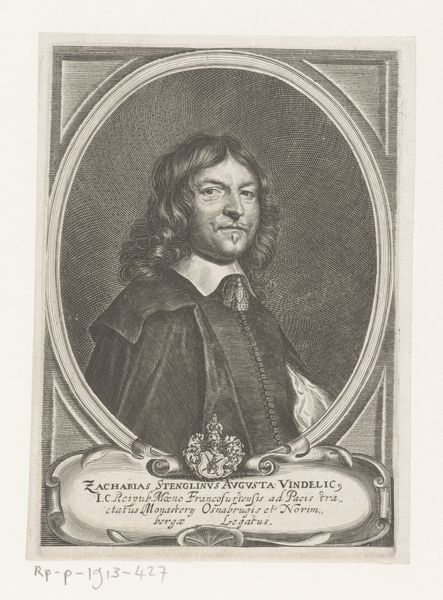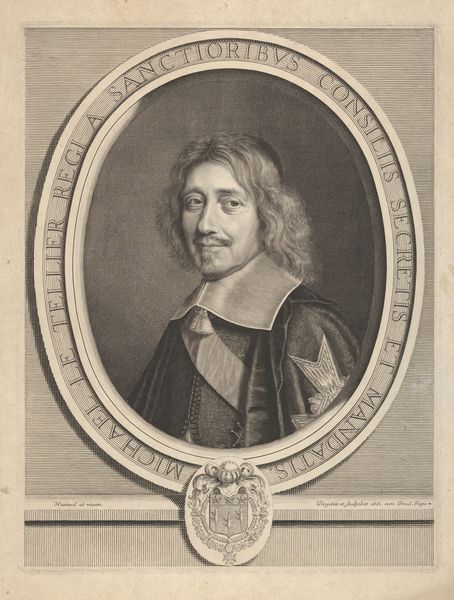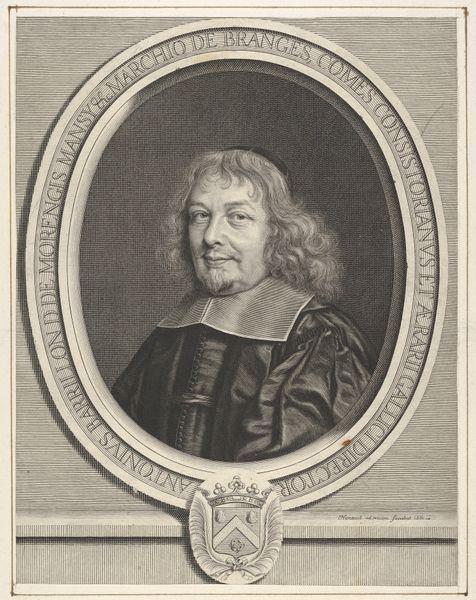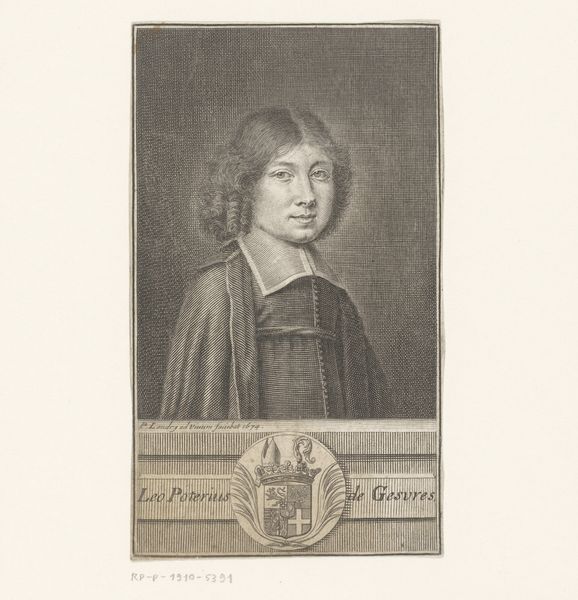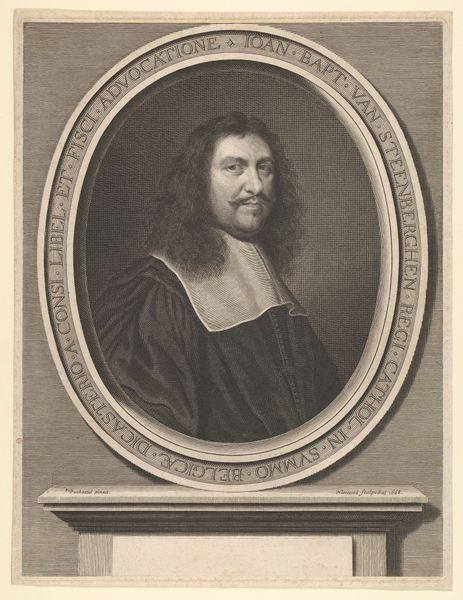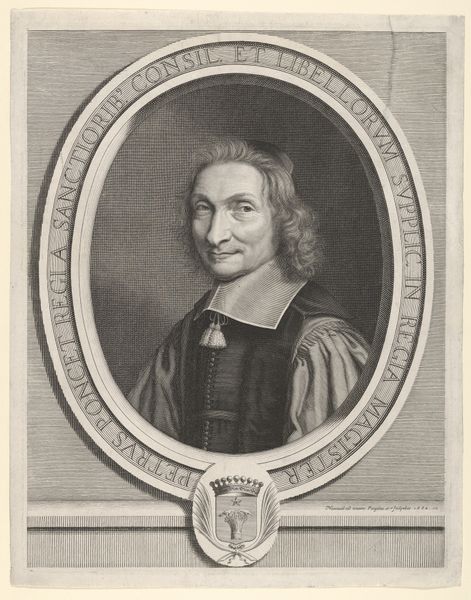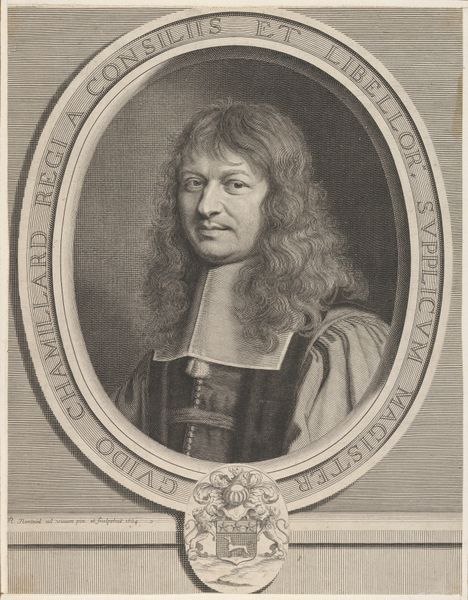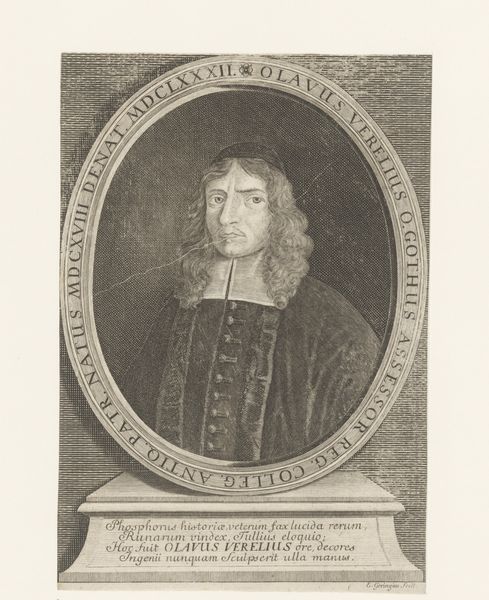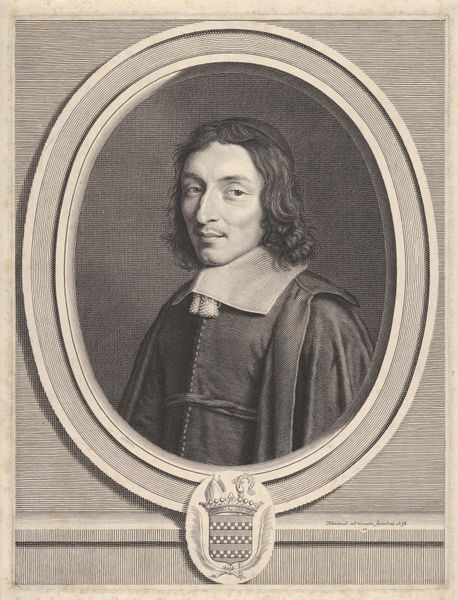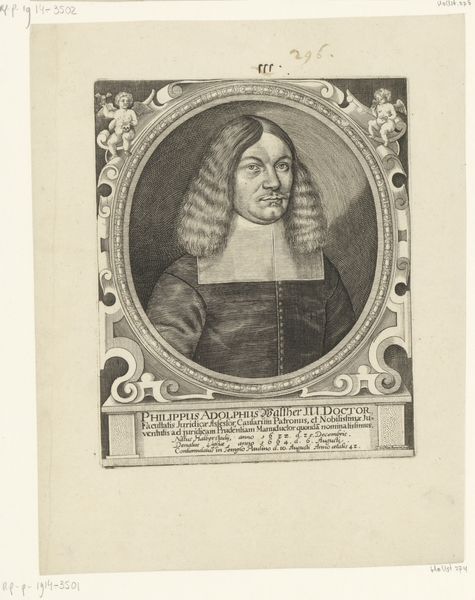
drawing, print, engraving
#
portrait
#
drawing
#
baroque
# print
#
engraving
Dimensions: Sheet: 11 7/16 x 9 1/2 in. (29 x 24.2 cm)
Copyright: Public Domain
Editor: This is Robert Nanteuil's "François Lotin de Charny," a portrait done between 1652 and 1662 using engraving. It’s amazing how much detail he could achieve with what’s essentially just lines. What do you see in it? Curator: I am particularly drawn to the mastery of line and tonal gradation achieved in this engraving. Observe how Nanteuil modulates the density and direction of lines to render form, texture, and light. The oval frame containing the portrait also invites our consideration. What does its geometry signify in relation to the depicted subject? Editor: It feels like it formalizes him, separates him somehow. The tight framing with all the writing. Does that serve a compositional purpose? Curator: Precisely. The frame isolates the figure, focusing attention on the intricacies of the face and attire. Furthermore, the inscription encircling the portrait not only identifies the sitter but also serves as a crucial element within the visual composition, creating a balance between text and image. How does the starkness of the collar play into the overall scheme? Editor: Good point. Its rigid lines against the more flowing lines of his hair create some nice tension. Is that contrast just decorative? Curator: Contrast, certainly, is one effect. But also consider how the severe geometry reinforces notions of rectitude. A visual encoding that invites reflection on how status and identity intertwine with artistic expression. Editor: I never thought of the collar as being such a key part of the whole construction. I guess you can analyze anything! Curator: Indeed! Formal analysis offers us a precise and rewarding engagement with artistic ingenuity.
Comments
No comments
Be the first to comment and join the conversation on the ultimate creative platform.

